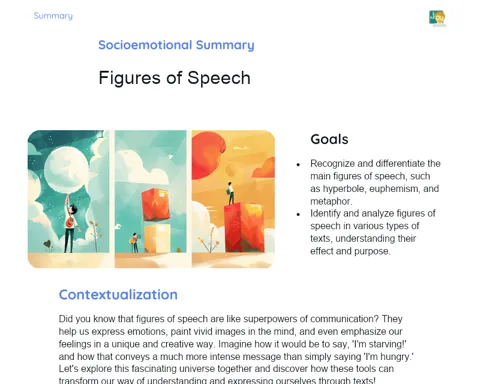Mastering Phoneme-Grapheme Correspondence: From Theory to Practice
Objectives
1. Identify and write words following the phoneme-grapheme correspondence rules.
2. Recognize that some sounds are represented by a single letter, while others may be represented by multiple letters.
Contextualization
Phonemes and graphemes are the foundation of our written communication. They allow us to transform sounds into letters and letters into words, facilitating reading and writing. Imagine how confusing it would be if each sound could be represented by any letter or combination of letters! Understanding these correspondences is essential for literacy and ensuring our texts are clear and understandable. For example, the word 'casa' is spelled with 'c' and not with 'k' due to phoneme-grapheme correspondence rules.
Relevance of the Theme
Correct correspondence between phonemes and graphemes is crucial for professions such as copywriters, journalists, and even software programmers. In a job market that increasingly values effective communication and precision, mastering these correspondences can make all the difference. A copywriter needs to ensure their texts are free of errors to maintain credibility, while a programmer must understand phonetics to develop voice recognition tools.
Phoneme-Grapheme Correspondence
Phoneme-grapheme correspondence is the relationship between the sounds of speech (phonemes) and the letters or groups of letters that represent them (graphemes). This correspondence is fundamental for reading and writing, as it allows us to transform sounds into letters and vice versa, facilitating written communication.
-
Phoneme: The smallest sound unit of speech.
-
Grapheme: A letter or combination of letters that represents a phoneme.
-
Importance: Essential for literacy and clear written communication.
Phonemes Represented by a Single Letter
Some phonemes are represented by a single letter, simplifying the phoneme-grapheme correspondence. For example, the phoneme /b/ is represented by the letter 'b' in most words. This type of direct correspondence facilitates learning to write and read.
-
Example: Phoneme /b/ represented by the letter 'b'.
-
Simplicity: Facilitates initial learning of reading and writing.
-
Consistency: Reduces ambiguity in writing.
Phonemes Represented by Multiple Letters
Some phonemes can be represented by multiple letters or combinations of letters, which can make the phoneme-grapheme correspondence more complex. For example, the phoneme /s/ can be represented by the letters 's', 'c' (as in 'casa') or 'ç' (as in 'açaí'). Understanding these variations is crucial for correct writing and avoiding spelling errors.
-
Example: Phoneme /s/ represented by 's', 'c', or 'ç'.
-
Complexity: Requires memorization and practice to master.
-
Relevance: Essential for correct and accurate writing.
Practical Applications
- Copywriters and journalists often review their texts to ensure that all words are spelled correctly, avoiding errors that could compromise the credibility of their articles.
- Programmers developing voice recognition software need to understand phoneme-grapheme correspondences to create algorithms that convert speech into text accurately.
- Educators use their knowledge of phoneme-grapheme correspondence to teach reading and writing effectively, helping students overcome spelling difficulties.
Key Terms
-
Phoneme: The smallest sound unit of speech.
-
Grapheme: A letter or combination of letters that represents a phoneme.
-
Phoneme-Grapheme Correspondence: The relationship between the sounds of speech and the letters that represent them.
Questions
-
How can an understanding of phoneme-grapheme correspondences help improve your daily writing?
-
What difficulties do you encounter when writing words that have multiple phoneme-grapheme correspondences?
-
In what ways can knowledge of phoneme-grapheme correspondences be useful in your future career?
Conclusion
To Reflect
Understanding phoneme-grapheme correspondence is an essential skill for effective written communication. Throughout this content, we explored how phonemes transform into graphemes and the importance of following these rules to avoid spelling errors. This knowledge not only facilitates literacy but also has practical applications in various careers, such as journalism, copywriting, and software programming for voice recognition. By mastering these correspondences, you will be better prepared to write clearly and accurately, a valuable skill in any profession.
Mini Challenge - Practical Challenge: Matching Phonemes and Graphemes
This mini-challenge aims to consolidate understanding of the phoneme-grapheme correspondence rules through a practical and collaborative activity.
- Partner up with a classmate.
- Each pair will receive a list of incomplete words, where some letters are missing.
- Use the phoneme-grapheme correspondence rules discussed in class to fill in the missing letters.
- After completing the list, swap with another pair and review their work, correcting any errors.
- Discuss in a group the correct answers and common mistakes, helping each other better understand the correspondences.



